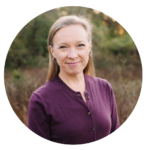Integrating Population Dynamics to Boost Climate Resilience
Insights from Report Contributors at Population Institute, the Center for Biological Diversity, and PATH Philippines
Population Institute’s recent report analyzes the impacts of climate change in vulnerable countries worldwide. It emphasizes how the intersection of these factors poses substantial long-term challenges for climate resilience and adaptation. We also are given insight into positive examples from five nations where creative policies and programs effectively integrate gender equality, reproductive health and rights, and climate adaptation.
We’ll be joined by Kathleen Mogelgaard, President and CEO of Population Institute, to introduce a discussion with contributors to the report. Panelists include Kelley Dennings, Population and Sustainability Campaigner at the Center for Biological Diversity, and Faith Bacon, PATH Foundations Philippines.
Presentation Date: September 14th, 2023
Kathleen Mogelgaard
President and CEO, Population Institute
 Before becoming the leader of the Population Institute in 2021, Kathleen gained extensive experience in policy analysis, research, and advocacy. She held senior advisory roles at Population Action International and Oxfam America, served as the Assistant Director of Government Relations at the National Audubon Society, and worked as a fellow at the Population Reference Bureau.
Before becoming the leader of the Population Institute in 2021, Kathleen gained extensive experience in policy analysis, research, and advocacy. She held senior advisory roles at Population Action International and Oxfam America, served as the Assistant Director of Government Relations at the National Audubon Society, and worked as a fellow at the Population Reference Bureau.
Kathleen actively participated in United Nations Framework Convention on Climate Change negotiations as an observer, representing the World Resources Institute and advocating for effective adaptation planning that considers the needs of marginalized communities. She has also taught courses on global challenges and political engagement at the University of Maryland.
Furthermore, Kathleen was the lead researcher and writer of the United Nations Population Fund’s 2019 State of World Population Report titled “Unfinished Business: The Pursuit of Rights and Choices for All.” She holds master’s degrees in public policy and natural resources from the University of Michigan.
Faith Bacon
Population, Environment and Development (PED) Advisor, PATH Foundation Philippines
Faith has been an implementer and advocate of the population, health, and environment approach to community development for almost two decades. Before joining PATH Philippines, she worked in the Philippine Congress and spent nearly a decade as a human development advocate with the Philippine Legislators Committee on Population and Development (PLCPD).
Her current position is with PATH Foundation Philippines, a pioneer in integrated PHE approach in the country. Faith is part of PFPI’s BUILD Asia Pacific Team and remains an active member of the Philippine PHE Network. Faith completed two years of Agricultural Economics from the University of the Philippines in Los Banos and her Bachelor of Arts in English Literature from the Philippine Christian University.
Kelley Dennings
Population and Sustainability Campaigner, Center for Biological Diversity
 Kelley (she/her) develops and executes advocacy and outreach initiatives addressing the connections between reproductive health, gender equity, endless growth, inequitable consumption, and the climate and extinction crises. Prior to the Center, she worked in waste management and forest conservation.
Kelley (she/her) develops and executes advocacy and outreach initiatives addressing the connections between reproductive health, gender equity, endless growth, inequitable consumption, and the climate and extinction crises. Prior to the Center, she worked in waste management and forest conservation.
She holds a bachelor’s degree in natural resources from North Carolina State University and a master’s degree in public health from the University of South Florida. She is a family-planning counselor and certified in public health, social marketing and project management.
Population Institute Report – Population and Climate Change Vulnerability: Understanding Current Trends to Enhance Rights and Resilience
Center for Biological Diversity – Gender and the Climate Crisis: Equitable Solutions for Climate Plans
Project Drawdown: Health and Education Solutions
Q+A
Given all that we have discussed about the linkages between climate change, gender equity, and reproductive health, what actions can policymakers take to increase climate resilience and better adaptation more holistically and effectively?
Response from Kelley Dennings:
We need to work within existing climate planning structures to address gender inequality as a public health issue.
Response from Faith Bacon:
We need to push policymakers for adaptive laws and policies and make existing instruments like the National Adaptation Plans, National Determined Contributions, and Health NAPs more inclusive in the process and content. To include population dynamics in their analysis and put in a clearer gender lens and interventions favoring the empowerment of women and girls at all levels and in all sectors.
This report joins a growing list of evidence supporting the fact that investments in empowering solutions like girls’ education and family planning are incredibly effective ways to help protect people’s and people’s livelihoods from climate threats. And yet, as the report points out, there aren’t many climate change adaptation plans that address demographic factors in preparing for climate change. Why do you think it’s so difficult to connect these issues? What do you think is the best way forward for closing these funding gaps?
Response from Kathleen Mogelgaard:
A big part of why it’s difficult to connect these issues in practice is because they involve very different sectors, and we, as a human society, are not great at working across sectors. For a long time, climate change adaptation activities were focused heavily on things like hardening infrastructure (building a better sea wall, for example) or advancing technology (figuring out a way to create drought-resistant seeds or farming practices that are more resilient to weather extremes). But we are getting better, I think, at recognizing the social dimensions of climate change adaptation, as well as what is required for long-term planning. This represents some real opportunities to bring in both population dynamics and gender equity dimensions.
It’s important for those creating climate change policies and climate change adaptation plans to understand how population dynamics relate to climate change vulnerability and how investments in gender equity and reproductive health care play an important role in reducing vulnerability and strengthening adaptive capacity. NAPs, NDCs, national climate policies, and climate finance institutions are great vehicles for this type of integration. We can continue to build the evidence base to support these ideas and showcase examples of how these issues have been successfully integrated into practice.
Lastly, as stakeholders, we can continue engaging in the processes playing out at local and national levels to identify adaptation priorities that will shape how climate finance is distributed. The Green Climate Fund and Adaptation Fund are two major multilateral finance institutions that will be channeling billions in adaptation support in the years to come; if even a small fraction of that support goes to gender equity and reproductive health, we can come a long way toward meeting people’s unmet needs in these areas.
What is the difference between the PHE (Population, Health, & Environment) approach and that of PED (Population, Environment, & Development)? Why are there two terms used to describe the same thing, and is one better to use than the other?
Response from Faith Bacon:
In reality, there is not much difference between the two approaches except that some consider the PED approach as the bigger approach, given the inclusion of the D for development. On the other hand, some in the PHE sector felt that PED de-focuses on the H, which is reproductive health and family planning. Thus, we have solved this “debate” by using PHED, putting both slightly different approaches together in PHED with the P to encompass population dynamic and demographic challenges and realities, H for health for family planning and reproductive health, Environment which covers climate change and biodiversity conservation among others and Development which is sustainable development in general.
In your experience, what are some of the main challenges to implementing PHE initiatives, specifically in the Philippines, where Roman Catholicism is essentially ubiquitous?
Response from Faith Bacon:
The main challenge is the strong opposition of the Roman Catholic Church hierarchy to the use of modern family planning. But it is worth noting that the church supports environmental and development issues as provided for in the Letter Laudato Si of Pope Francis, which calls for the protection of Mother Earth. On this stance, we are one with the church and have involved them in implementing the PHED approach.
As for the challenge of their opposition to family planning and the use of modern contraception, one has to remember that although the Philippines is 79% Roman Catholic, this also means that the Catholic faithful are still the main acceptors of the Family Planning programs being implemented by government and non-government organizations. The challenges we have had through 20 years of our advocacy for Reproductive Health law in the Philippines come from the Roman Catholic Church hierarchy and not much from the “flock.” We partnered with an organization called Inter-faith Partnership for the Promotion of Responsible Parenthood to generate support from other faith-based groups and the Catholics for Reproductive Health, a robust group of Catholic faithful who support family planning, reproductive health, and gender issues.
Is there any work being done to create a cartoon character(s) in an effort to normalize girls/women who chose to have no children or small families?
Response from Kathleen Mogelgaard:
I’m not aware of a specific cartoon character, but it’s my sense that in many places, there is greater and greater social acceptance of people’s choices to be child-free or to have families of all different sizes and configurations. Filmmaker Maxine Trump explored these questions in a moving and compelling way in her 2018 film, “To Kid or Not to Kid,” and there is growing interest in the child-free movement (see this article for some interesting perspectives and history).
All that said, there remains a stigma around these choices almost everywhere in the world, and views on childbearing are deeply embedded in social and cultural values and traditions. Shifting cultural norms toward greater human rights and dignity can be a slow and incremental undertaking, and there’s lots of evidence to show how entertainment can be a force for good in this regard. The Population Institute’s sister organization, Population Media Center, has a long track record of creating impactful radio and television dramas tackling social and cultural norms that counter rights. It can be a powerful medium!
How can we educate men on the positive impacts of collaborating with women and support their education, work, and dreams?
Response from Kelley Dennings:
It is so important to include men in these conversations. In 2021, the Center highlighted multiple stories from men who had a vasectomy. You can watch the videos on our YouTube page.
Unfortunately, external condoms and vasectomies are not covered by the Affordable Care Act like women’s contraceptive methods. The Center sees this as an area ripe for improvement. On the research and development side of things, a handful of groups are trying to find additional reversible contraceptive methods for men other than condoms and vasectomies.
Your report showed many climate plans identify at-risk groups as “vulnerable populations,” which is a term that you feel is too general. Why and how do you think that gender needs to be specifically included?
Response from Kelley Dennings:
Including vulnerable populations is important in a climate plan, but we don’t think it is enough if that isn’t narrowed down further to the people included in those groups. Stories highlighting the disproportionate impact of climate change on women in the United States aren’t hard to find. As heat and air pollution increase due to climate change, so do adverse pregnancy outcomes that often have life-long consequences. For example, 27% of women firefighters’ pregnancies end in miscarriage, and these women’s preterm birthrate is almost 7% higher than the national average. Extreme weather events can limit access to abortion and contraception, making reproductive justice and autonomy over whether to become pregnant more difficult. Hurricane Katrina caused disruption in family planning services for young women in New Orleans even five to six months after the storm. Four percent experienced an unintended pregnancy because they couldn’t access care. As noted earlier, these effects are even more prevalent for Black, Indigenous, and people of color, who often live in under-resourced, polluted communities — further compounding the effects of climate change.
What is the current population of the United States, and how much has it grown since 2013?
Response from Kelley Dennings:
The US Census Bureau has the current US population at about 335 million (up from about 315 million in 2013). Population is a global issue, not just any one country. Immigration and the pursuit of better circumstances are basic human rights. While there’s room for debate over the best methods to manage immigration, we don’t view it as the way to address population growth, overconsumption, urban sprawl, unsustainable growth, and the effects they have on wildlife and the wild places they need to survive. The same systems of oppression that overexploit the environment and drive the climate and extinction crises harm people. We do not oppose the migration of people into the United States, especially as there are more climate migrants.

